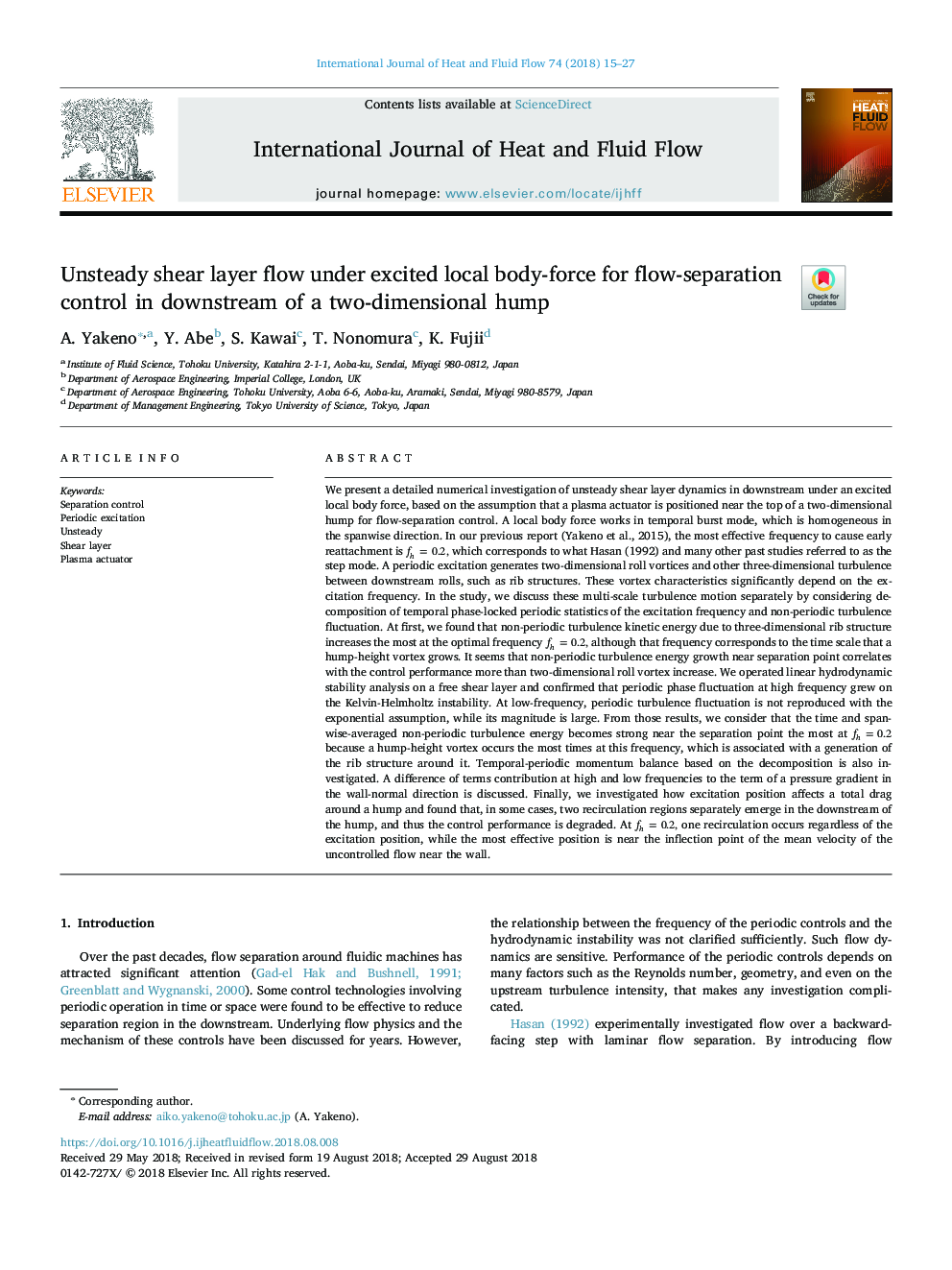| Article ID | Journal | Published Year | Pages | File Type |
|---|---|---|---|---|
| 10226142 | International Journal of Heat and Fluid Flow | 2018 | 13 Pages |
Abstract
We present a detailed numerical investigation of unsteady shear layer dynamics in downstream under an excited local body force, based on the assumption that a plasma actuator is positioned near the top of a two-dimensional hump for flow-separation control. A local body force works in temporal burst mode, which is homogeneous in the spanwise direction. In our previous report (Yakeno et al., 2015), the most effective frequency to cause early reattachment is fh=0.2, which corresponds to what Hasan (1992) and many other past studies referred to as the step mode. A periodic excitation generates two-dimensional roll vortices and other three-dimensional turbulence between downstream rolls, such as rib structures. These vortex characteristics significantly depend on the excitation frequency. In the study, we discuss these multi-scale turbulence motion separately by considering decomposition of temporal phase-locked periodic statistics of the excitation frequency and non-periodic turbulence fluctuation. At first, we found that non-periodic turbulence kinetic energy due to three-dimensional rib structure increases the most at the optimal frequency fh=0.2, although that frequency corresponds to the time scale that a hump-height vortex grows. It seems that non-periodic turbulence energy growth near separation point correlates with the control performance more than two-dimensional roll vortex increase. We operated linear hydrodynamic stability analysis on a free shear layer and confirmed that periodic phase fluctuation at high frequency grew on the Kelvin-Helmholtz instability. At low-frequency, periodic turbulence fluctuation is not reproduced with the exponential assumption, while its magnitude is large. From those results, we consider that the time and spanwise-averaged non-periodic turbulence energy becomes strong near the separation point the most at fh=0.2 because a hump-height vortex occurs the most times at this frequency, which is associated with a generation of the rib structure around it. Temporal-periodic momentum balance based on the decomposition is also investigated. A difference of terms contribution at high and low frequencies to the term of a pressure gradient in the wall-normal direction is discussed. Finally, we investigated how excitation position affects a total drag around a hump and found that, in some cases, two recirculation regions separately emerge in the downstream of the hump, and thus the control performance is degraded. At fh=0.2, one recirculation occurs regardless of the excitation position, while the most effective position is near the inflection point of the mean velocity of the uncontrolled flow near the wall.
Related Topics
Physical Sciences and Engineering
Chemical Engineering
Fluid Flow and Transfer Processes
Authors
A. Yakeno, Y. Abe, S. Kawai, T. Nonomura, K. Fujii,
